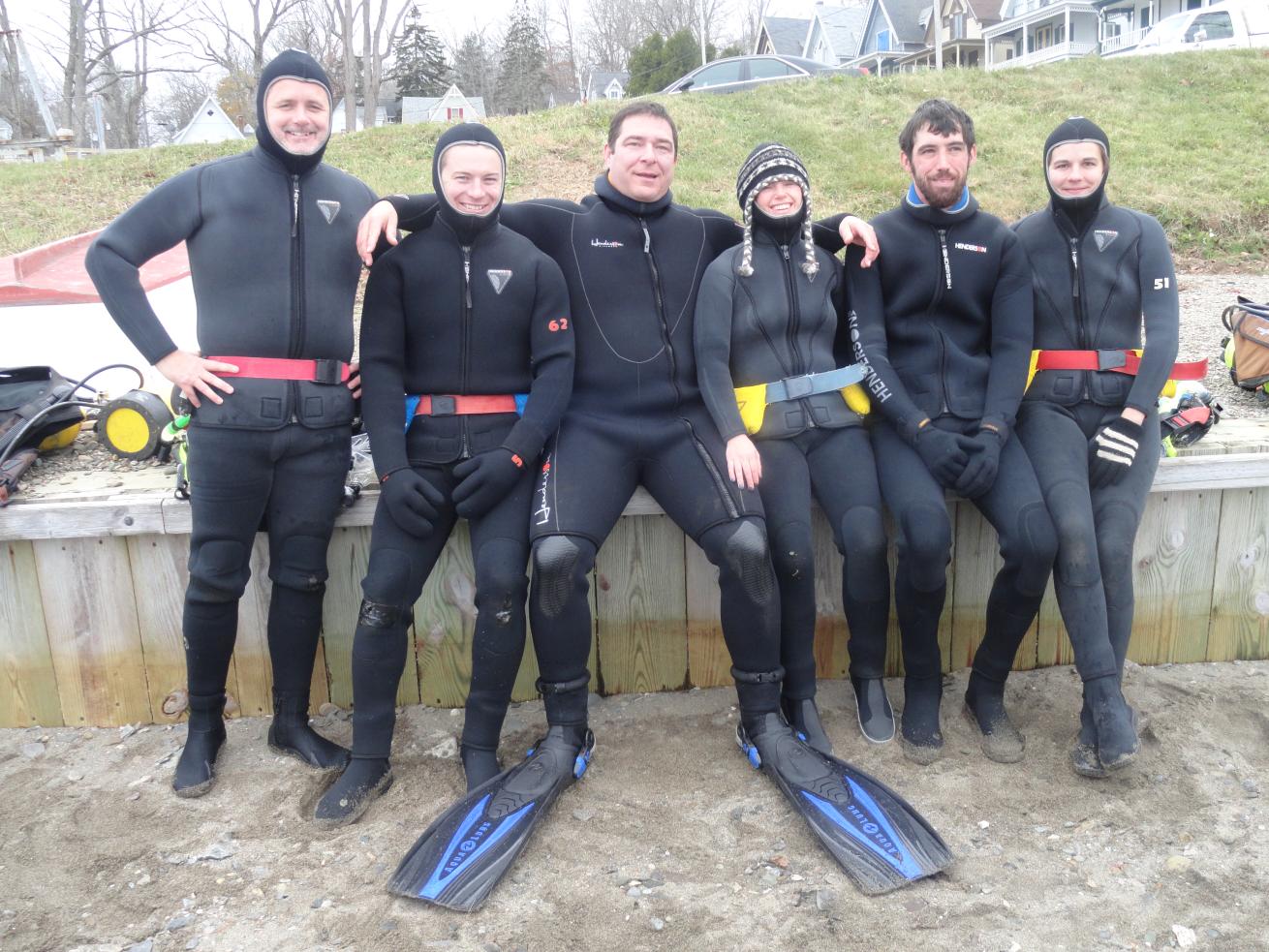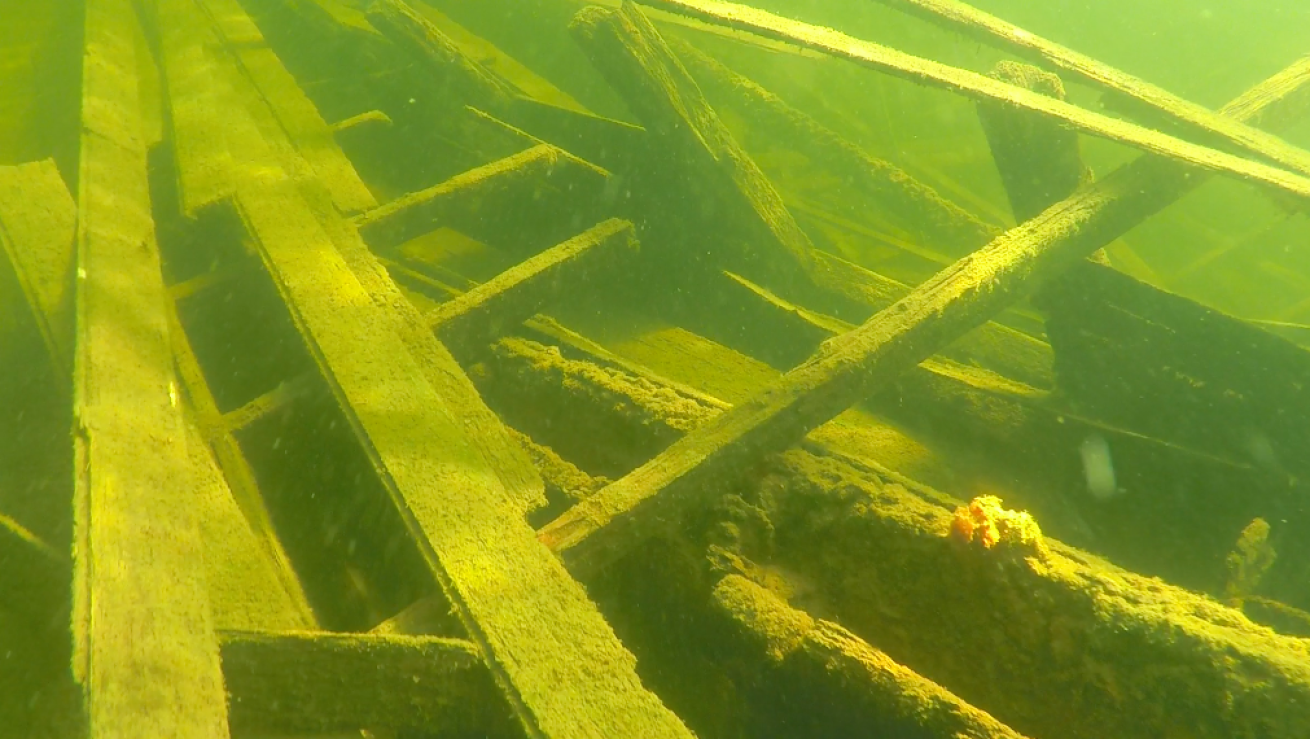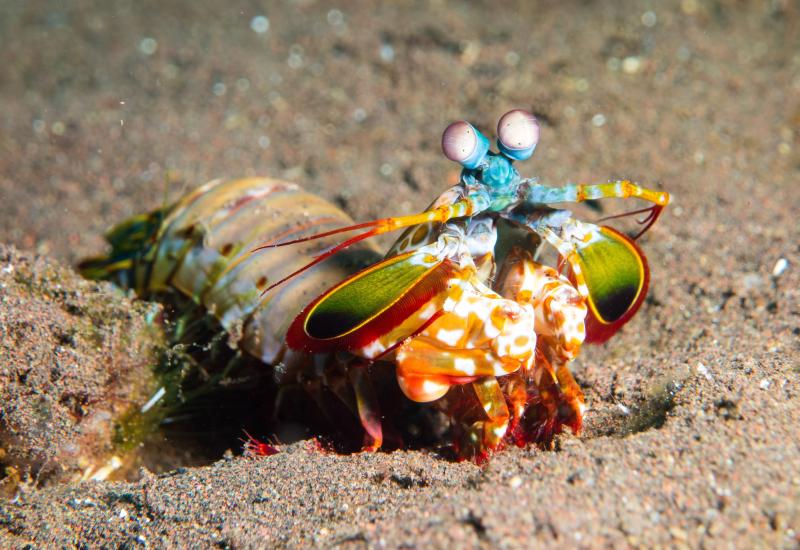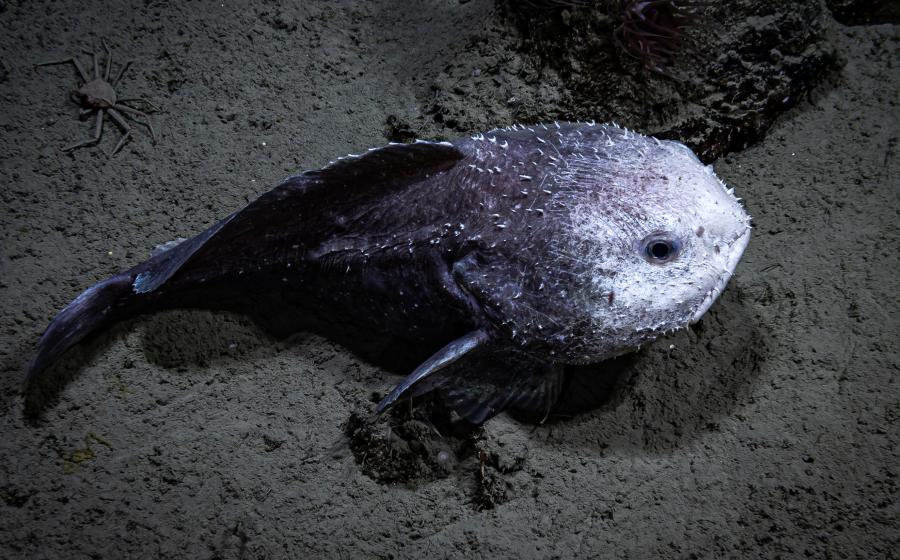Their Hobby? Discovering New Shipwrecks in Maine.

Charles H. LagerbomThe original Mid-Coast Aqua-Nuts gather topside.
Diving in Maine is tricky. The weather conditions can change quickly, and as soon as the wind makes the water choppy, visibility is reduced to almost nothing. As one of the northernmost coastlines in the continental United States, the water temperature stays chilly throughout the year—to say nothing of the air above.
But if you know where to look, these waterways shield hidden treasures. Maritime historian Chip Lagerbom and his diving group, the Mid-Coast Aqua-Nuts, have made it their mission to make diving more fun and accessible in the state by uncovering shipwrecks in Maine’s Penobscot Bay, once a bustling colonial trade and military route.
Lagerbom, a history teacher at the local Belfast Area High School, started organizing local dives after his diving refresher class in 2010. He set up an email thread with a few classmates (one of which was a fellow teacher, another a former student) and the group began diving together along the Midcoast, the stretch of Maine’s coastline north of the Portland metro. They operated namelessly for a while, until a chance encounter after an autumn dive off the Rockland Breakwater.
“We were coming out, our teeth were chattering and we were trying to take our gear off. This guy is sitting there in his car watching us—typical, gruff coastal Mainer—and he looks at us and says, ‘You guys are nuts.’ And we all look at each other and say, ‘Hey that’s a great name,’” Lagerbom laughs.
And so, the Mid-Coast Aqua-Nuts were born.
The group (and email chain) grew as fellow divers spotted them on the shore. Area scuba shops and instructors started connecting interested divers with the group too, and member Sean Kelly lit the fuse when he launched the Mid-Coast Aqua-Nuts Facebook group.
Lagerbom estimates that there are now around around 200 people associated with the groups, with about a dozen to 20 core members who show up for almost every dive.
The Facebook group and email thread – which, yes, still continues – have helped the Mid-Coast Aqua-Nuts take part in coastal cleanups, gear swaps and odd jobs, like searching for lost items below the water. They’ve collected kelp spores for classes at the Belfast Area High School, and practiced diving during the winter in the school's pool.
The pride and joy for Lagerbom, though, is the work that the group has done to catalog shipwrecks in the Penobscot Bay. Lagerbom, who earned a Masters degree in Archaeology and History studying maritime history, knew that a number of ships had met their watery end in the rocky mouth of the Penobscot River. Most notably, perhaps, is the Penobscot Expedition, a 44-ship American naval armada sent up from Boston in 1779 to support American troops during the Revolutionary War. During its attempt to reclaim Maine’s Midcoast from England (who had taken the area and named it New Ireland), the Penobscot Expedition was downed in the upper Penobscot Bay in the worst naval defeat in American history until Pearl Harbor 162 years later.

Charles H. LagerbomWreckage of the FC Pendleton in Seals Harbor.
The group had dived on shipwrecks before, like the FC Pendelton in Seals Harbor, but Lagerbom found that information about the sites was difficult to find and relied heavily on local knowledge that was not centrally recorded. One winter between dive seasons, Lagerbom started working on a database of the location, condition and historical information about shipwrecks in the Penobscot Bay. After talking about the passion project with some of his fellow Aqua-nuts, he realized that other members of the club were interested in contributing.
Kelly was one such Aqua-nut interested in exploring and cataloging the shipwrecks of the Midcoast. He learned to dive in the Navy and has always had an interest in the technology of naval voyages and the artifacts wrecks leave behind, like old medicine bottles.
“You need to know what you’re looking for. They’re usually very violent events, so they’re debris fields more than shipwrecks,” Kelly says, “[but] there’s something romantic and mysterious about it, maybe a sense of lost adventure.”
Since then, the Mid-Coast Aqua-Nuts have cataloged close to 400 shipwrecks in their database. The sites vary widely, from sparsely scattered debris fields to eerie skeletons of the boats of yore.
“Our goal is to have a working database of shipwrecks that we’ve visited so we can comment on the conditions of the current area as a dive guide, but also for historical sakes,” Lagerbom says. “You could say I want to find all the shipwrecks.”
The database is currently only shared between members, but Lagerbom says that it’s coming along — it’s “useful” and “searchable,” even if it is not yet complete. Eventually, he says, they hope to be able to contribute it to an institution like the Penobscot Marine Museum in Searsport, or some other repository of Maine’s historical knowledge.
Until then,Lagerbom gives talks at historical societies around the state about the history that the Aqua-nuts are discovering during dives..
“It’s become a nice piece of the maritime connections in Midcoast Maine. I’m proud of the fact that the club has become that,” Lagerbom said. He recognizes that divers are drawn to the water for all different reasons—some of the Mid-coast Aqua-nuts are more interested in exploring the Gulf of Maine’s diverse marine life than searching for shipwrecks—but this project in particular is special to him.
“I like the humanities side of maritime issues because it’s more people-focused,” he says. “I don’t want that to be forgotten and overlooked.”
Are you ready to get back in the water and help save the ocean? #LiveUnfiltered with your PADI ReActivate course today!










